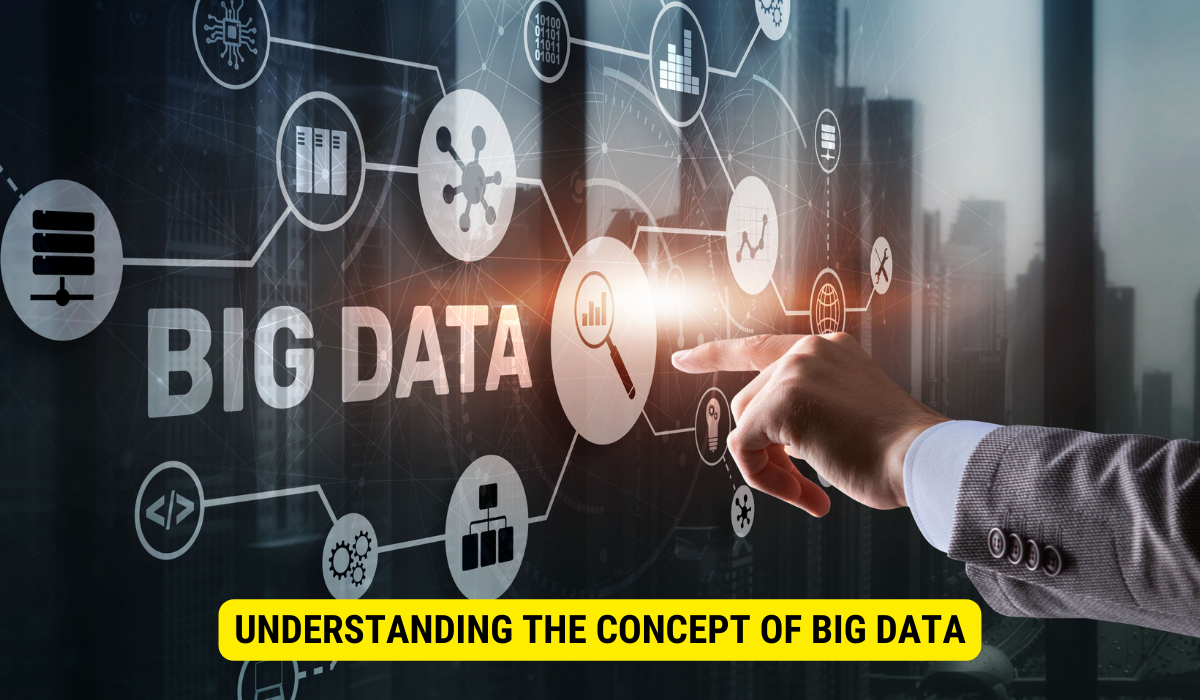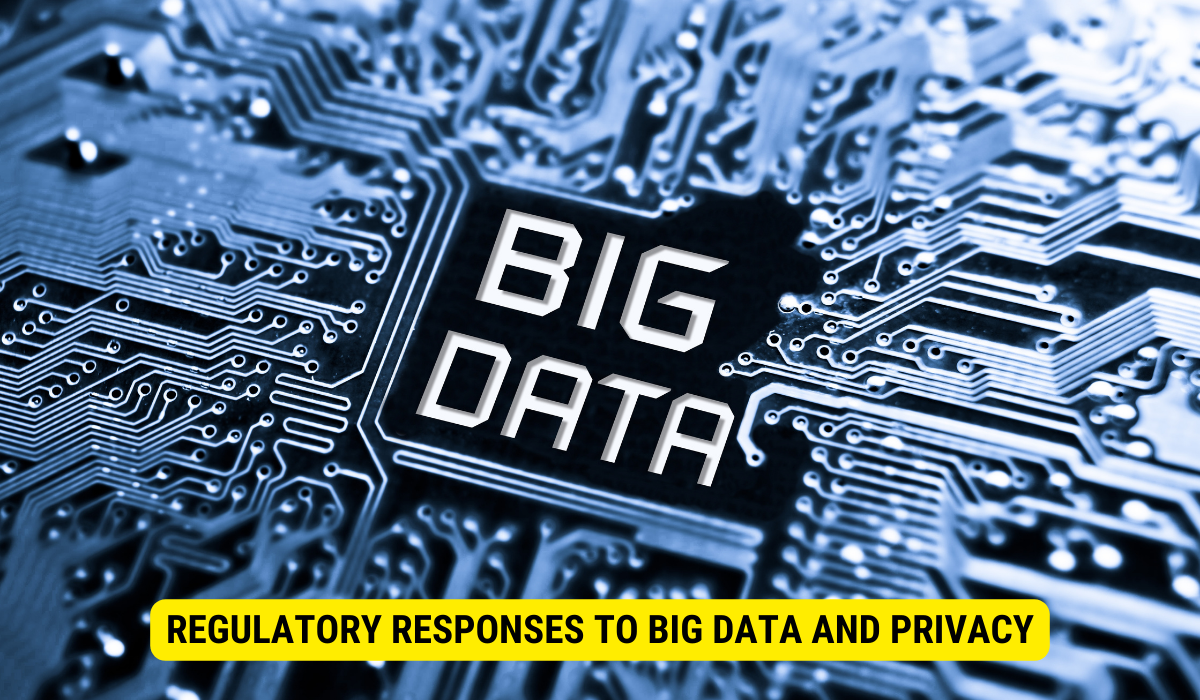The advent of big data, characterized by vast and complex datasets, has fundamentally altered traditional concepts of privacy. With the increased capacity to collect, store, and analyze personal information, the understanding and expectations surrounding privacy have evolved, leading to greater concerns about data protection and a shift in regulatory responses.
The concept of big data has transformed the way we understand and navigate the world. Privacy concerns have also evolved, with vast data being generated and collected. Together, we will explore how the concepts of privacy have changed in response to the rise of big data.
Understanding the Concept of Big Data
Before delving into the impact on privacy, it is crucial to understand what big data entails. Big data refers to massive datasets that are too complex and voluminous for traditional data processing methods.
Big data has become integral to our digital world, revolutionizing how we analyze and interpret information. It has evolved rapidly over the years, transforming from a mere buzzword to a fundamental concept in data analytics.
The Evolution of Big Data
Initially, “big data” was primarily used to describe data sets too large for conventional database systems to handle. These datasets were so massive that traditional data processing and analysis methods were insufficient. However, with advancements in technology, the concept of big data expanded to include the volume, variety, and velocity of data.
As technology progressed, organizations started to realize that the value of data lies not only in its sheer volume but also in its diversity. Big data now encompasses structured, unstructured, and semi-structured data, allowing businesses to gain insights from various sources. This includes everything from traditional databases and spreadsheets to social media posts, emails, videos, images, and sensor data.
Moreover, the velocity at which data is generated, collected, and analyzed has also become a crucial aspect of big data. In today’s fast-paced digital landscape, data is being produced at an unprecedented rate. Real-time data streams from various sources, such as IoT devices, social media platforms, and online transactions, require organizations to process and analyze data in near real-time to make informed decisions.
Key Components of Big Data
When we talk about big data, we refer to the three Vs: Volume, Variety, and Velocity. These components play a pivotal role in understanding the complexity and significance of big data.
Volume: The volume of data generated daily is staggering. Various sources, including social media interactions, online transactions, sensor readings, and more, produce millions of gigabytes of data every second. The sheer volume of data is what distinguishes big data from traditional datasets.
Variety: Besides its volume, big data encompasses various data types. This includes structured data, which is organized and easily searchable, such as data stored in relational databases. Unstructured data, on the other hand, refers to data that does not have a predefined structure, like social media posts, emails, and multimedia content. Semi-structured data falls somewhere in between, containing both structured and unstructured elements. The ability to analyze and derive visions from this diverse range of data is a key aspect of big data analytics.
Velocity: The velocity at which data is generated and processed is another critical component of big data. With the advent of real-time data streams, organizations must be able to collect, process, and analyze data at high speeds to gain timely insights. The ability to handle data in motion as it is generated allows businesses to make informed decisions and respond quickly to changing circumstances.
Understanding the concept of big data and its key components is essential for organizations looking to leverage its potential. By connecting the power of big data, businesses can gain valuable insights, make data-driven decisions, and stay ahead in today’s data-centric world.
The Traditional Concept of Privacy
Before the advent of big data, privacy was primarily associated with protecting personal information. Individuals had control over their data, deciding what to disclose and to whom. However, the rise of big data has challenged this traditional concept of privacy.
Defining Privacy in the Pre-Digital Age
In the pre-digital age, privacy was centered around physical spaces and individuals’ ability to control access to personal information. People expected that their conversations, activities, and documents would remain private.
Imagine a time when privacy was not just a buzzword but a fundamental aspect of everyday life. In a world without smartphones and social media, individuals could engage in conversations without the fear of being recorded or monitored. They could freely express their thoughts and thoughts without worrying about being judged or scrutinized. Privacy was a cherished value, allowing people to maintain a sense of autonomy and personal freedom.
Furthermore, privacy in the pre-digital age extended beyond personal conversations. It encompassed the physical spaces we inhabited. Our homes, offices, and even public places were considered private domains where we could retreat from the prying eyes of others. We could control who entered our personal spaces and create boundaries safeguarding our privacy.
Privacy Rights and Legal Frameworks
Legal frameworks were established to safeguard privacy in the pre-digital age. Privacy rights, such as the right to be secure from unreasonable search and seizure, were enshrined in laws. Individuals could seek legal recourse if their privacy were violated.
These legal protections were crucial in maintaining privacy and personal security. They assured individuals that their personal information would not be unlawfully accessed or exploited. Privacy laws served as a shield against unwarranted intrusion, ensuring that individuals could go about their lives without constant surveillance or invasion of their personal space.
Moreover, privacy rights were not just limited to individuals. Businesses and organizations also had a vested interest in protecting the privacy of their customers and clients. They understood that trust and loyalty were built on the foundation of privacy. By respecting the privacy of their stakeholders, businesses could foster long-lasting relationships and maintain a positive reputation.
In conclusion, the traditional concept of privacy in the pre-digital age revolved around protecting personal information and controlling access to it. It encompassed physical spaces and was supported by legal frameworks safeguarding privacy rights. However, with the advent of big data and the digital age, privacy has evolved, presenting new challenges and considerations.
The Intersection of Big Data and Privacy
With the advent of big data, the traditional concept of privacy has collided with the capabilities and demands of data analytics. The intersection of big data and privacy raises critical concerns about collecting, storing, and using personal information.
Big Data’s Impact on Personal Information

Big data technologies allow for the processing and analysis of vast amounts of personal information. This includes data collected from online activities, social media, and even offline sources like surveillance cameras. With the ability to connect disparate data points, individuals’ privacy is at risk of being cooperated.
Privacy Concerns Raised by Big Data
Big data presents numerous privacy concerns. One major concern is the potential for reidentification, where seemingly anonymous data can be linked to specific individuals. Moreover, collecting and analyzing personal data can create detailed profiles, revealing intimate aspects of individuals’ lives without their explicit consent.
Changes in Privacy Concepts Due to Big Data
The rise of big data has fundamentally shifted our perceptions of privacy. Concepts once considered private are now subject to extensive data collection and analysis. This has significantly changed how individuals view and protect their privacy.
Shifting Perceptions of Privacy
With the increasing presence of big data, there has been a shift in perceptions of privacy. Many individuals have become more aware of how much their personal information is collected and processed. This heightened awareness has led to reevaluating what privacy means in the digital age.
The New Normal: Privacy in the Age of Big Data
In the age of big data, there is an emerging concept of “privacy in public.” As individuals navigate the digital landscape, they recognize that their actions and personal information are no longer private. The new normal acknowledges that some data collection and analysis is inevitable.
Regulatory Responses to Big Data and Privacy
Recognizing the implications of big data on privacy, regulatory bodies worldwide have taken steps to protect individuals’ information.
Global Privacy Regulations in the Big Data Era
Various countries and regions have implemented privacy regulations to address the encounters posed by big data. These regulations aim to give individuals greater control over their personal information and establish guidelines for organizations handling data.
The Role of Policy in Protecting Privacy
Effective policy plays a crucial role in protecting privacy in the age of big data. By setting clear data collection, storage, and usage standards, policies ensure that individuals’ rights are respected and provide organizations with guidelines to follow.
Key Takeaways
- Big Data’s Influence: The emergence of big data has revolutionized the ability to analyze and interpret vast amounts of information, influencing perceptions of privacy.
- Traditional Privacy: Before the digital age, privacy was centered around physical spaces and personal information control.
- Shift in Privacy Views: Big data has led to a new understanding of privacy, where personal information, even in public domains, is subject to extensive data analysis.
- Regulatory Response: Recognizing big data’s implications on privacy, regulatory bodies globally have initiated privacy regulations to protect individual data.
- Balancing Act: The challenge remains to balance leveraging big data’s benefits and ensuring stringent data protection and privacy.
FAQs
What is big data?
Big data refers to massive datasets that are too large and complex for traditional data processing methods.
How has big data affected traditional concepts of privacy?
With the ability to process and analyze huge amounts of personal information, big data challenges traditional privacy notions, leading to data collection, storage, and usage concerns.
What are the primary privacy concerns raised by big data?
Big data raises issues like potential reidentification from anonymous data, unauthorized profiling, and the lack of explicit consent in data collection and analysis.
How have perceptions of privacy changed with big data?
In the digital age, there’s a growing acceptance of “privacy in public,” recognizing that some level of data collection is inevitable while navigating online spaces.
How have regulations responded to big data privacy concerns?
Global regulations, like GDPR, have been implemented to give individuals more control over their data and set business guidelines for data handling.
Conclusion
In conclusion, the rise of big data has brought about significant transformations in the concepts of privacy. With the vast amount of data being generated and analyzed, individuals are navigating new landscapes where personal information is no longer solely under their control. As regulatory responses evolve, striking a balance between the benefits of big data and protecting privacy remains a critical challenge.
